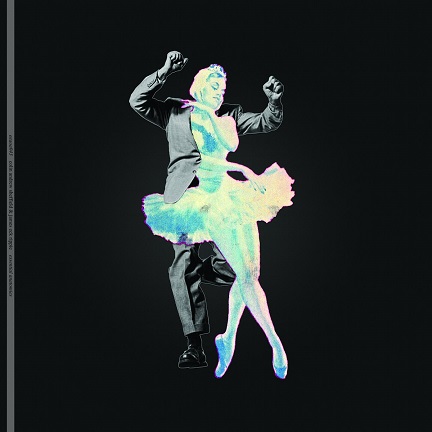 Compiling recent small-run cassette works into a luxurious double record set, Essential Anatomies represents a reunion for the duo of Colin Andrew Sheffield and James Eck Rippie.  Collaborators since 2000 and friends for even longer, the four lengthy recordings here capture their Texas reunion in 2015, and with its undeniable sense of complexity and cohesion, makes it clear that they have not missed a step from their time apart.
Compiling recent small-run cassette works into a luxurious double record set, Essential Anatomies represents a reunion for the duo of Colin Andrew Sheffield and James Eck Rippie.  Collaborators since 2000 and friends for even longer, the four lengthy recordings here capture their Texas reunion in 2015, and with its undeniable sense of complexity and cohesion, makes it clear that they have not missed a step from their time apart.
On paper, what Sheffield and Rippie do is well-trod ground:  processing and recontexualization of samples and other forms of pre-recorded music.  But rather than being another pair of John Oswald wannabes, they do so with distinct expertise and precision.  To use a slightly abstract metaphor, they are much closer to Public Enemy’s Bomb Squad production, taking bits here and there and using them as elements in a much different whole, than they are Puff Daddy’s wholesale plagiarism and lack of innovation.
The first of the four lengthy pieces (each around 22 to 23 minutes long) is an instant launch into the gloom that is Essential Anatomies.  Chilling, piano like scrapes cut through a blackened, churning abyss of sound.  Some shrill, sharp bits pierce through the darkness here and there, but the piece largely stays pleasant, even though it is rather bleak and covered in a nicely noisy sheen of fuzz.  Tortured, almost melodic tones occasionally shine through a wall of ghostly drifts and heavy rumbles, at times heading toward a bit of harsh crunch, but stays in check.  The melodies appear here and there again, acting as a slightly less oppressive counterpoint to the sound of decay that surrounds it.  Finally, the duo end the piece on a lighter note, like sun shining through menacing gray skies.
What is abundantly clear right from this start is that Sheffield and Rippie are not only extremely proficient at creating moods and space with their samplers and turntables (respectively), but also a creating dynamic compositions that are quite expansive and varied, changing often but returning to reoccurring motifs that results in a more composed, rather than improvised sound.  The second piece allows a bit more of their source material to shine through, mostly in the form of piano notes and what sounds like frozen reverberations of chimes far in the distance.  There is the same sense of space, but erratic loops and mangled notes result in a composition that builds in tension, eventually transitioning into haunting church organ like walls that dominate the latter half of the piece.
Comparably, the second record comes across a bit less melodic and a bit more textural in the composition and structure.  Part three begins with an almost percussive, crunching machinery like opening that is eventually melded with a batch of wet, almost organic like noises and radio static.  Bits of recognizable music still sneak through here and there, but it is less the focus.  Instead, metallic sweeps and unnatural field recording like sounds fill out the mix, though it ends on a slightly more ambient note.  The final composition first is free and spacious, with some crackling tactile like elements at first, but soon it takes on a decaying sound.  More organ and mangled string fanfares give a more conventional signpost here and there, but by the end the duo has already transitioned the sound to one of tension and fright, slowly evolving into an uncomfortable silence to end the record.
While I do not believe I could ever manage to place the source of the sounds Colin Andrew Sheffield and James Eck Rippie utilized in making Essential Anatomies, never does it feel like the two overly processed or from their source.  Meaning that, there is some of the original character left from the source material, however subtle it may be.  Instead these audio building blocks are obscured but tastefully utilized to construct these atmosphere heavy works.  Rippie’s day job is a sound mixer for films and television shows, which surely aided the two in creating the cinematic mood that these two records conjure up.  It is that combination of sonic nuance and compositional strength and diversity that make Essential Anatomies so good.
samples:
 
Read More

